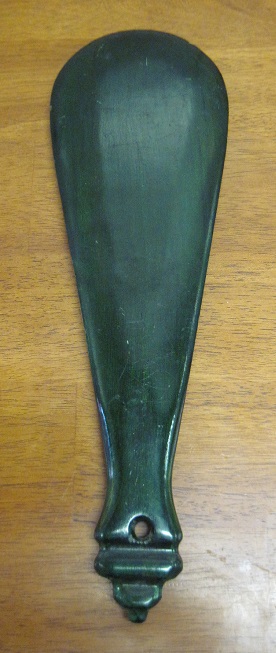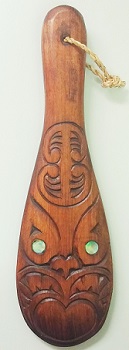Subject: ariki / rangatira warrior chief
Culture: Maori
Setting: Musket Wars, Aotearoa / New Zealand 1807-1830
Object: patu hand club
Peabody Museum of Archaeology and Ethnology > Arts of War *
* Brooklyn Museum > Art of the Pacific Islands
"Club (Patu Onewa) Maori people; New Zealand, 18th century Green basalt ...
Maori short clubs were primarily used as thrusting weapons during close combat. This club would have been tucked into the warrior's belt and secured to his waist by a cord passed through the hole in the handle. Regarded as very personal items, such clubs were passed from father to son. A flawlessly smooth finish brings out the preferred green color of this club's basalt stone."
*
* Metropolitan Museum of Art > Oceania
"Club (Mere Pounamu) Māori people, Aotearoa (New Zealand), 19th century Greenstone ...
One of the principal weapons of Māori warriors was the patu, a teardrop-shaped hand club used to strike a thrusting or slicing blow to an enemy. When not in use, patu were often worn suspended from the wrist by a fiber loop or thrust into a belt as symbols of martial prowess. The most prized examples, called mere pounamu, were made from greenstone (pounamu), a type of jade. Laboriously ground and polished, mere pounamu were created for the chiefly elite and passed down within families as heirlooms.
* National Museum of Scotland > Royal Museum
"Club Maori people New Zealand Late eighteenth or nineteenth century
Jade (nephrite) with a dogskin thong. Nephrite clubs were an emblem of chieftainship, and highly prized by the Maoris. To achieve a perfectly carved club from this hard stone could take years as they became heirlooms, carrying great spiritual power and the luck of the tribe. They were carefully guarded and hidden in times of danger. Leather thongs were added to prevent the hand slipping and weakening the force of the blow."
*
* National Museum of Scotland > Royal Museum
"Club Maori people New Zealand Nineteenth century A heavy club, made of basalt, which would have been deadly at close quarters in battle. Such clubs could be used for killing seals and moas, a now extinct flightless bird." ...
*
> event photos
* Terewa Kerekere



